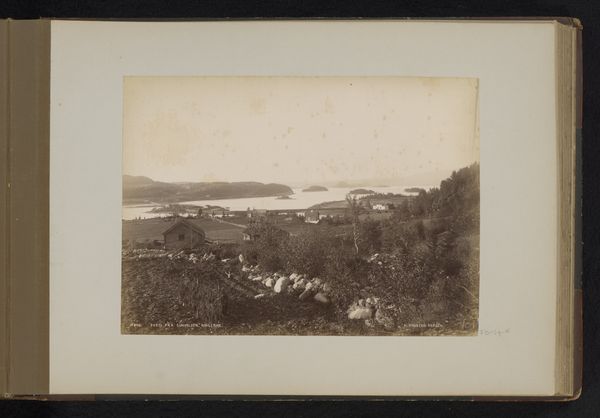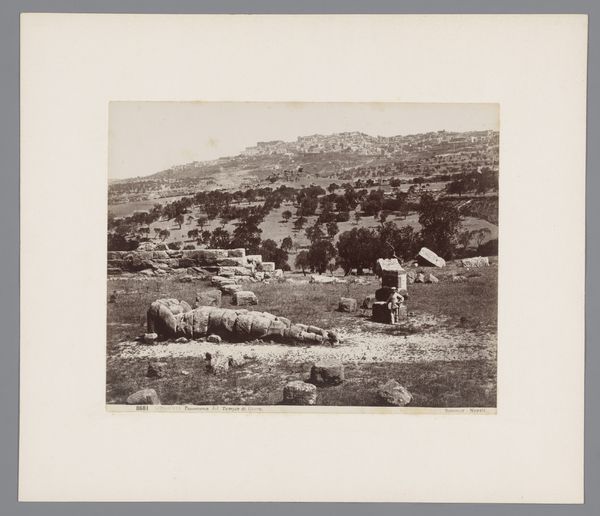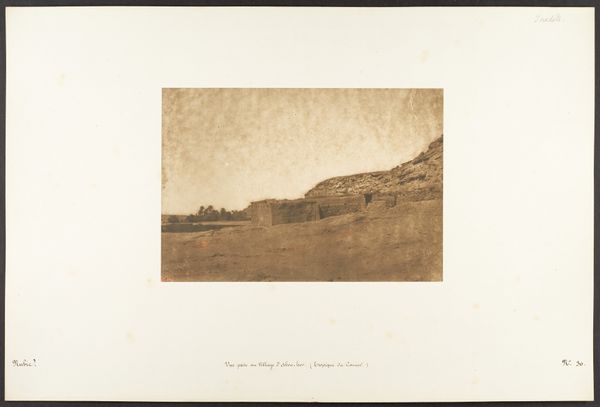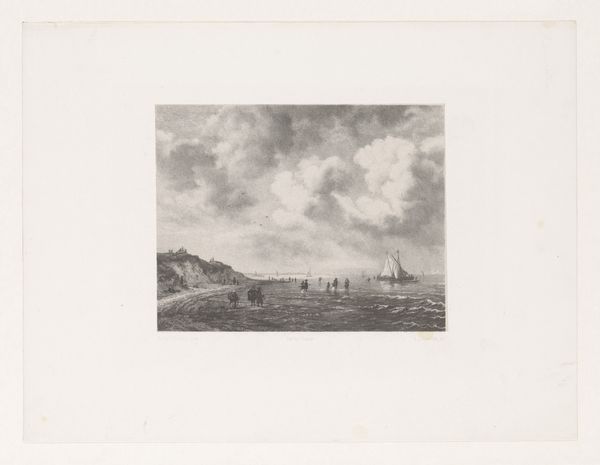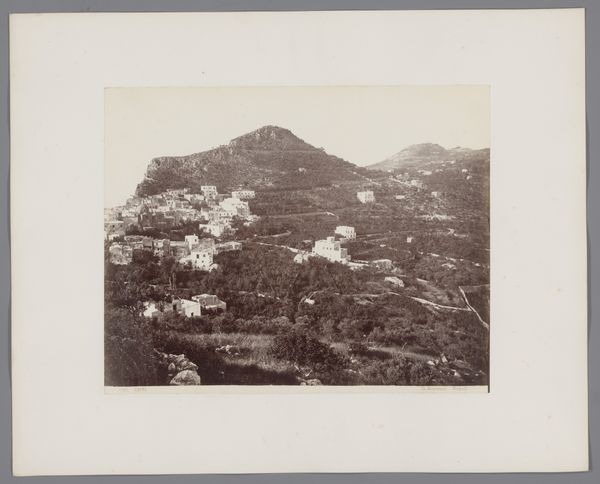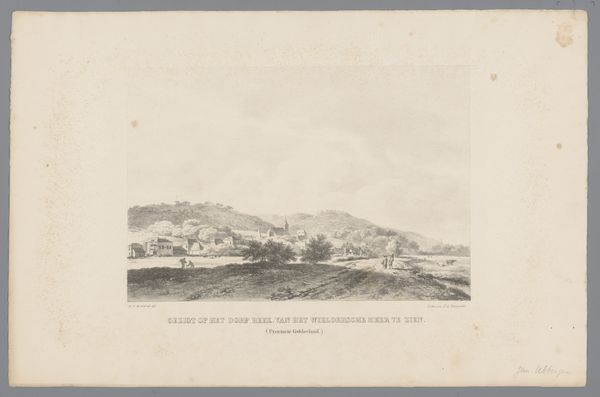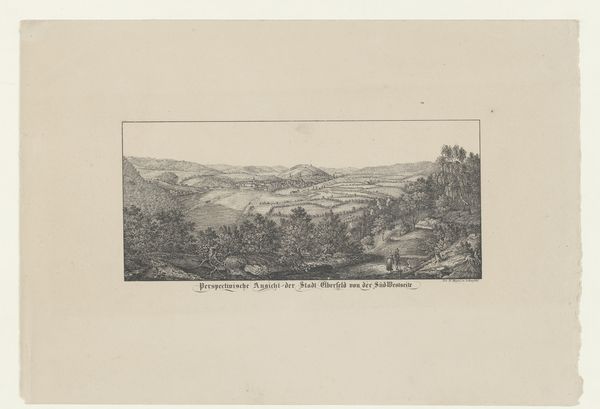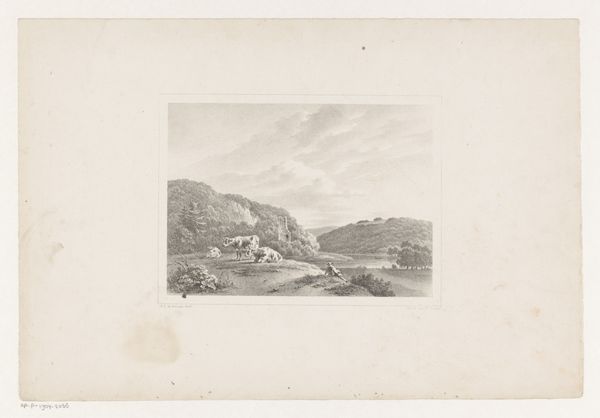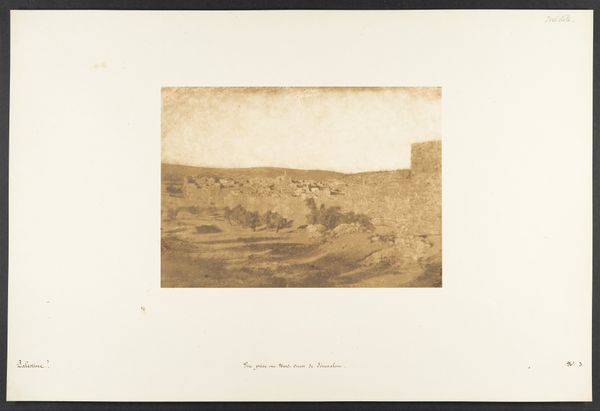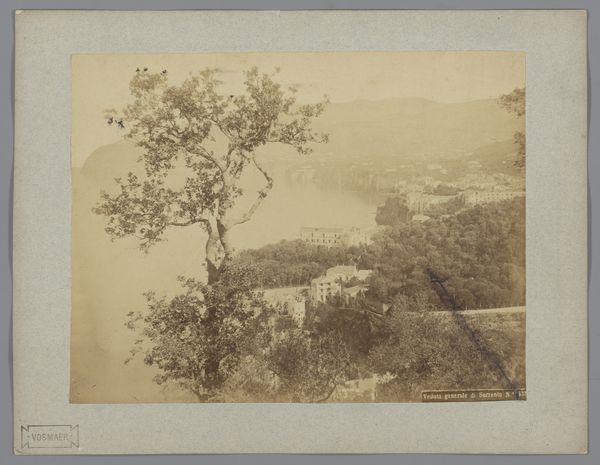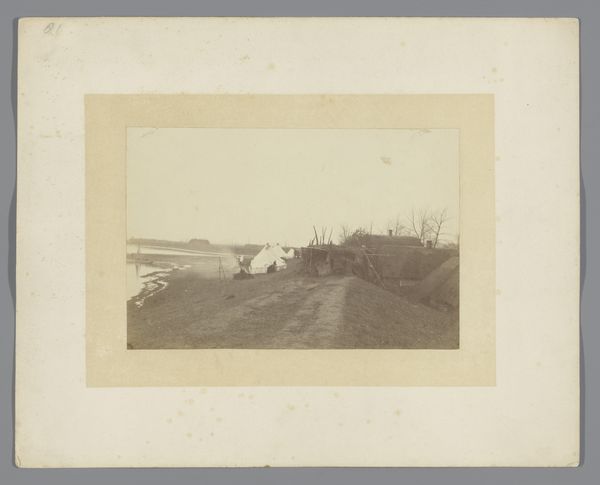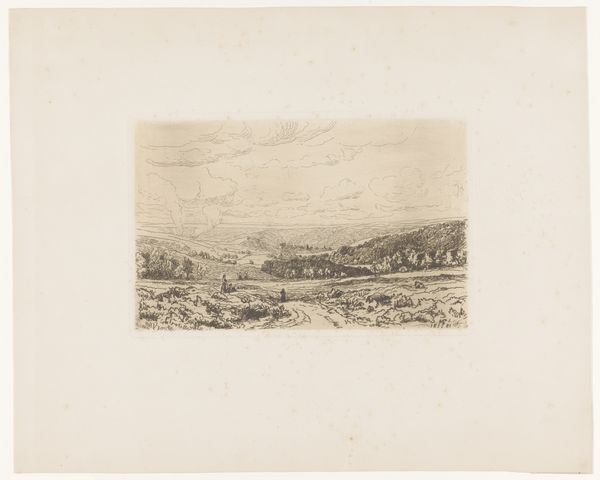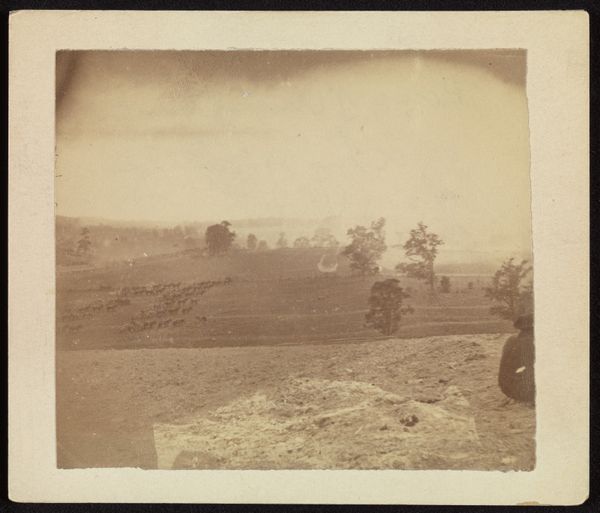
photography
#
still-life-photography
#
pictorialism
#
landscape
#
photography
Dimensions: height 203 mm, width 269 mm, height 407 mm, width 608 mm
Copyright: Rijks Museum: Open Domain
Curator: Wilhelm Ivens invites us to consider the "View of the Keteldal near Nijmegen, as seen from Ubbergen," a photograph he created sometime between 1867 and 1904. Editor: My initial impression is one of gentle stillness, a scene caught in a moment of hazy repose. The composition is intriguing; it feels like a very structured arrangement. Curator: Indeed, the structure offers a compelling framework for considering Ivens's technical approach. The subtle gradations in tone and careful balance of light and shadow suggest a highly refined, deliberate methodology, nodding towards pictorialism. Editor: I see it also reflecting its cultural moment. The late 19th century was a time of great social change, where idyllic images of the landscape served as a balm of sorts, maybe against rapid urbanization and industrial development. It evokes a certain nostalgic desire. Curator: The politics are not that simple though, and landscape depictions themselves, through selection and cropping, suggest ownership and mastery, ideas that resonate with colonialism. Editor: A valid point. Yet, observing the photograph in purely formal terms, I am fascinated by the way Ivens manipulated depth and perspective. The slightly softened focus contributes to a sense of atmospheric depth, creating subtle veils, and drawing my gaze deeper into the landscape. Curator: These technical choices and artistic interventions make it more than a simple documentation, aligning it with artistic photography as a visual style—or rather movement, that wanted photography to be considered on par with painting, sculpture, and other visual fine art disciplines. Editor: And the very choice of capturing this pastoral view offers an opportunity to reflect on our contemporary relationship to nature, compared to the cultural views and aspirations that prevailed at the time the image was created. Curator: A sentiment made compelling by its pictorial construction. We might wonder how it fits within the broader societal values and aesthetics that valued and sustained that type of perspective. Editor: Absolutely. Exploring these layers invites us to reflect on the role images play in constructing our understanding of our relationship with landscapes.
Comments
No comments
Be the first to comment and join the conversation on the ultimate creative platform.
